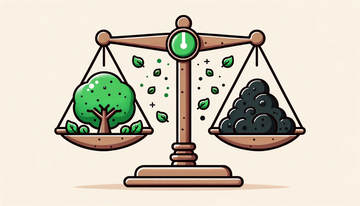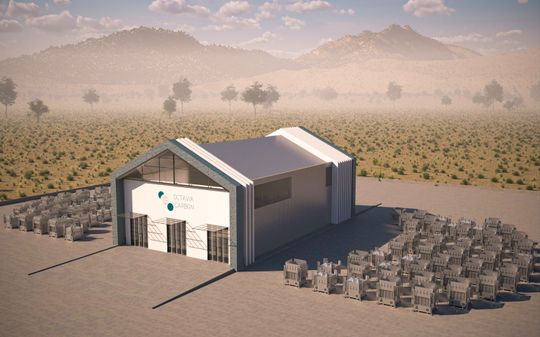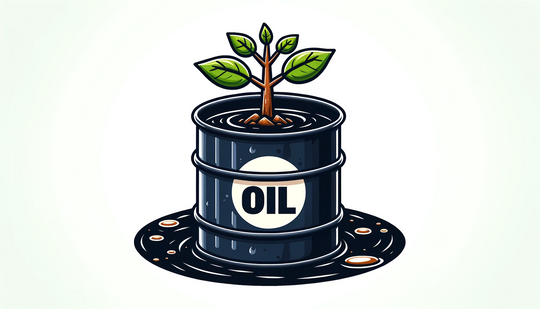Carbon removal is a complex topic, but it's essential to understand if we want to tackle climate change. This article will give you a basic understanding of carbon removal, so you can be part of the solution.
What is "carbon removal"?
Carbon dioxide removal (or CDR, negative emissions or simply "carbon removal") is the process of removing carbon dioxide (CO₂) from the atmosphere. CO₂ is a greenhouse gas that contributes to climate change by trapping heat, so removing carbon dioxide can help to mitigate climate change.
Do we really need to take CO₂ back out of the sky?
Yes, we do need carbon removal.
The world is facing a climate crisis. Unnatural CO₂ levels in the atmosphere have resulted in the average global temperature increasing by about 1 degree Celsius since the pre-industrial era, and is projected to continue to rise. This warming is causing a number of changes to the climate, including more extreme weather events, rising sea levels, and melting glaciers.
Reducing emissions is essential to mitigate climate change, but it is not enough. We also need to remove the CO₂ humans have produced so far and the future emissions that we cannot avoid yet.
Carbon removal can help to:
- Slow the rate of climate change;
- Reduce the impacts of climate change;
- Create jobs and stimulate economic growth;
- Help us create a net-zero bridge to a sustainable future.
How does it work? The different types of carbon removal
A range of methods has emerged to capture and store carbon. They can be separated into three distinct categories of carbon removal techniques: natural, technological, and hybrid approaches.
Nature based
Nature-based carbon removal methods utilise natural ecosystems and processes to capture and store carbon dioxide. These methods leverage the Earth's existing mechanisms for carbon sequestration and are often considered sustainable and have the added benefits of preserving biodiversity, enhancing ecosystem resilience, and supporting various ecosystem services.
- Afforestation and reforestation: This involves planting trees in areas that were previously without forests. Trees absorb carbon dioxide as they grow, and store it in their wood, leaves and roots.
- Blue carbon: This involves protecting and restoring coastal ecosystems such as mangroves, salt marshes, and seagrass beds, which are highly efficient at capturing and storing carbon.
- Enhanced weathering: This involves using natural processes to speed up the weathering of silicate rocks, like olivine, which can remove carbon dioxide from the atmosphere.
Hybrid
Hybrid carbon removal methods combine both natural and technological approaches to maximise the effectiveness of carbon capture and storage.
- Carbon farming and soil carbon sequestration: This involves using farming practices that promote the growth of healthy soils, which can store more carbon. This can include techniques such as cover cropping, conservation tillage, agroforestry, and regenerative grazing.
- Agroforestry: This involves integrating trees into agricultural systems to provide multiple benefits, including carbon sequestration.
- Ocean fertilisation: This involves adding nutrients to the ocean to encourage the growth of phytoplankton, which absorb carbon dioxide through photosynthesis.
- Ocean alkalinity enhancement: This involves adding substances such as lime or crushed silicate rocks to the ocean to make it more alkaline, which can promote the storage of carbon in the deep ocean.
- Kelp sinking: This involves cultivating kelp and allowing it to sink to the deep ocean seafloor where it can sequester carbon for centuries.
- Carbon mineralization: This involves converting carbon dioxide into solid minerals such as calcite or magnesite.
Technological solutions
Technological carbon removal methods involve the use of advanced technologies.
- Binding CO₂ to concrete: This involves using a mineralization technique to bind CO₂ to demolished concrete, thus removing it permanently.
- Direct air capture and storage: This involves capturing carbon dioxide directly from the air and storing it underground. The storage part can involve mineralisation (i.e. turning the gas into a stable solid) or store the gas itself in underground caverns and wells.
- Bioenergy with carbon capture and storage (BECCS): This involves growing energy crops such as switchgrass, willow or poplar, burning them to generate electricity, and capturing and storing the resulting carbon dioxide emissions.
- Biooil and biochar production and storage: This involves creating liquid biofuels or charcoal-like materials through the pyrolysis of biomass. These materials can be stored underground, preventing the carbon they contain from returning to the atmosphere.
- Carbon negative products: It's possible to make products that embed CO₂. These need to store the carbon for some years so things like carbonated beverages are not enough, instead carbon can be used as an addition to building supplies or create new products entirely to lock the CO₂ up for the short-to-mid term.
Do all carbon removal methods end up with the same result?
Unfortunately nothing is ever simple, especially subjects about climate change. Carbon removal is no different and when we compare different removal methods there are a set of criteria we need to take into consideration.
An example: Afforestation compared to bio-oil injection
Both methods capture carbon dioxide, but the mechanisms are different. Afforestation relies on natural carbon sequestration through photosynthesis and ecosystem development, while biooil injection involves biomass undergoing pyrolysis to then be pumped underground.
Permanence: While afforestation has the potential to be as permanent as biooil injection, the risk of carbon release due to factors such as wildfires and tree mortality can undermine its long-term permanence, whereas biooil injection offers a more secure form of carbon storage.
Environmental Impact: Afforestation promotes biodiversity and ecosystem services, while biooil injection has the potential to utilise waste biomass and store carbon in a way that doesn't directly impact ecosystems.
Challenges: Afforestation faces challenges related to land availability and long growth periods, while biooil injection's challenges include technology development and infrastructure setup.
Applicability: Afforestation requires available land, suitable for growing trees, whereas biooil injection requires suitable geological formations and infrastructure.
How can we compare different removal methods
Here at Climacrux we use following criteria to compare removal methods:
- Permanence: is a combination of expected storage time and risk of reversal.
- No leakage: means the CO2 storage needs to be stable.
- Additionality: means that the carbon removal would not have otherwise happened.
- Verification: encompasses proof of the removal. Often methods are verified by rigorous, transparent monitoring approaches.
- No double counting: 1 tonne of removed CO2 must only be sold once.
- No net harm: means people and wildlife should not be harmed in the process.
- Co-benefits: are desired side effects.
Carbon removal does have its challenges
Cost
The cost of carbon removal is high, but it is expected to come down as the technology improves. The cost of direct air capture (DAC) is currently around $1,200 per tonne of negative emissions, but this is expected to (or rather we are hoping that it will) come down to $100 per tonne by 2050.
Efficiency
The efficiency of carbon removal technologies is also improving, and the ability to scale up carbon removal is becoming more feasible.
Scalability
The ability to scale up carbon removal is a major challenge. Many carbon removal methods are currently not scalable to the level of emissions reductions that are needed to mitigate climate change.
Environmental impacts
There are concerns about the environmental impacts of carbon removal. For example, DAC could potentially compete with land for food production or water use. However, these impacts can be mitigated by careful planning and management.
Monitoring, reporting and verification (MRV)
It is important to have robust MRV systems in place to ensure that carbon removal projects are delivering the promised benefits. This will help to build trust and confidence in the carbon removal market.
The future of carbon removal
It seems that every week there is fresh news in the CDR space (side note: we try to cover that here at Carbon Removed so maybe consider joining the newsletter to keep up to date),
What can you do to help?
If you want to help shape this emerging market, we have some ideas for you to consider that can collectively have an impact.
Vote for carbon removal and sustainability policies
Societal change is needed but society is complex and ultimately made up of the general actions of all of us. One easy way to have an impact is to look for politicians who value sustainability.
Engage with your elected officials on multiple platforms, including town hall meetings, public forums, and through written correspondence. Clearly articulate the urgency and significance of carbon removal in combating climate change. Research and support specific policies and legislation aimed at carbon removal, such as incentives for renewable energy projects, carbon pricing mechanisms, and regulations promoting sustainable practices across industries. You can also join or support advocacy groups and NGOs dedicated to advancing carbon removal and sustainable policies. These organisations often provide valuable resources and guidance on effective ways to influence policy-making.
Reduce your own emissions
It goes without saying that every individual's contribution to minimizing their carbon footprint plays a critical role in tackling the broader issue of climate change. Simple daily choices, when collectively made by millions, can lead to significant reductions in global emissions.
Opt for sustainable transportation options whenever possible. Consider carpooling, using public transit, biking, or walking for shorter trips. The fewer cars on the road, the fewer emissions are released into the atmosphere. Additionally, explore the feasibility of electric or hybrid vehicles to further minimize your carbon footprint. As technology advances, these options are becoming more affordable and efficient.
Embrace a plant-based diet or reduce meat consumption. The agricultural sector, particularly livestock farming, contributes significantly to greenhouse gas emissions. This shift can significantly decrease the emissions associated with animal agriculture. Explore vegetarian and vegan recipes to discover flavorful, eco-conscious meal options. This not only benefits the planet but can also offer numerous health advantages.
Implement energy-efficient practices in your home. By taking steps such as installing LED lighting, optimizing insulation, and using programmable thermostats, you can significantly reduce energy consumption. These changes, while seemingly minor, can add up to significant savings, both environmentally and financially.
Consider investing in renewable energy sources like solar panels or wind turbines if feasible. Harnessing energy from the sun or wind not only reduces dependence on fossil fuels but also offers a sustainable way to power your household. As we transition to a cleaner energy future, taking proactive steps in this direction makes a considerable difference.
Educate others on the emerging role of negative emissions
Talking to your friends, family and colleagues is an important step in furthering the perception and use of carbon removals in our society. We have to ensure the discussion is informed and balanced so please
Utilize various communication channels to reach a wider audience. This could involve organizing workshops, webinars, or informational sessions in your community, workplace, or educational institutions.Provide accessible and relatable resources, such as articles, videos, and infographics, that break down complex concepts surrounding carbon removal and climate change. Tailor the information to suit the audience's level of familiarity with the topic.Highlight success stories and case studies showcasing the positive impact of carbon removal initiatives. Real-world examples can inspire action and demonstrate the feasibility of sustainable practices.
Work in climate tech
With so much innovation happening, there are new opportunities appearing every day. Consider monitoring the following links to see if there is something that appeals to you and your skillset:
Support startups and innovations
Startups often push the boundaries of technology and innovation. By investing in, supporting, or even just sharing their work, you can help drive progress in the carbon removal sector. Crowdfunding platforms, grants, and green tech incubators are great places to discover and support promising carbon removal projects.
Participate in community initiatives
Grassroots movements play a crucial role in driving societal change. Participate in local carbon removal and sustainability initiatives to make an impact on the ground level. Tree planting events, community gardens, and local clean-up days are simple but effective ways to contribute directly to the cause.
Stay informed and advocate for research
Continuous research and development are crucial for improving carbon removal technologies and methods. Support academic and independent research by donating, sharing their findings, or advocating for increased funding in the field.
Practice sustainable consumerism
Your purchasing decisions have a ripple effect on the market. Opt for sustainable and eco-friendly products to send a message to businesses about consumer preferences. Brands that prioritize sustainability and carbon-neutral practices can have a positive impact on the environment. By supporting them, you're driving demand for sustainable goods and services.
Buy carbon removal, today
There is no denying that negative emissions are expensive today however we need thought leaders - like yourself - to help shape the
Hesitation could mean failure of the carbon removal market.
We work primarily with suppliers who have demonstrable and scientifically proven negative emissions.
Please ensure you perform proper due diligence beforehand on your removal methods of choice.
In the end
While the challenge of climate change is daunting, the potential of carbon removal offers a beacon of hope. By understanding the different methods, advocating for supportive policies, and taking personal actions, every individual can play a role in shaping a sustainable future. As technology evolves and society shifts towards more eco-conscious behaviors, carbon removal will undoubtedly play a pivotal role in our collective efforts to combat climate change. It's a journey we must undertake together, with urgency, optimism, and determination.
Some commonly asked questions around CO₂ removal
How is carbon removal related to "net zero" and "carbon neutral"?
The terms "net zero" and "carbon neutral" are often used interchangeably and mean that the amount of greenhouse gases emitted into the atmosphere is equal to the amount of greenhouse gases removed from the atmosphere.
Carbon removal is a key part of achieving net zero or carbon neutrality. By removing carbon dioxide from the atmosphere, we can help to offset the emissions that we cannot avoid.
It is important to note that net zero/carbon neutral have to be accomplished with carbon removal and can not be accomplished only with carbon credits (which are typically reductions in third party emissions).
Isn't this just an excuse to continue business as usual and avoid decarbonizing?
No - absolutely not (and those who say otherwise are missing the point of carbon removal). CDR is a necessary compliment to reducing our emissions of greenhouse gases to zero.
The Intergovernmental Panel on Climate Change (IPCC) is the leading international body for the assessment of climate change. In their "Sixth Assessment Report" the IPCC concluded that "negative emissions technologies are likely to be needed to limit warning to 1.5°C or 2°C".
Why are we investing so much developing new technologies when we can just plant trees, natures carbon remover?
Natural carbon removal is not enough. Trees are a great way to remove carbon from the atmosphere, but they cannot remove enough carbon to offset the emissions that we are currently producing. We need to remove billions of tons of CO2 per year to achieve net-zero emissions, and planting trees alone cannot do that.
New technologies can be used in combination with natural carbon removal. We can use new technologies to remove carbon from the atmosphere and then use natural processes to store it. This can help us to remove more carbon and make the process more efficient.
It is important to note that planting trees is still a valuable tool for carbon removal. We should continue to plant trees and invest in natural carbon removal. However, we also need to invest in new carbon removal technologies to help us meet the challenge of climate change.
Carbon dioxide is needed by plants, if we take it out the air won't all the plants die?
Yes, plants need carbon dioxide to survive however we are not promoting a world with 0% carbon dioxide. The planet needs a certain concentration of CO₂ to ensure the world does not freeze over and for the natural carbon cycle involving plants.
The amount of CO₂ in the atmosphere is currently around 415 parts per million (ppm) which is significantly higher than the pre-industrial level of ~280 ppm. This increase is solely due to human activities such as burning fossil fuels and deforestation.
Carbon removal is being developed to bring levels down to the pre-industrial, natural concentration.
How does this differentiate from "carbon credits" that have been around for years?
Carbon credits and carbon removal are both tools that can be used to mitigate climate change. However, they work in different ways.
Traditional carbon credits are tradable certificates that represent the right to emit a certain amount of greenhouse gases. They are created when a company or organization reduces its emissions below a certain level. These excess emissions reductions can then be sold to other companies or organizations that need to offset their emissions.
Carbon removal is the process of actively removing carbon dioxide from the atmosphere.
The main difference between carbon credits and carbon removal is that carbon credits only reduce emissions, while carbon removal actually removes carbon dioxide from the atmosphere. As a result, carbon removal can have a more immediate and direct impact on climate change.
How much carbon removal do we need?
The amount of carbon removal required was not specified in the IPCC report and it's hard to put an exact number.
In reality we need as much as we can right now.
How can we scale up carbon removal?
Carbon removal is still in its early stages, and it is not yet clear how we can scale it up to the level that is needed. However, there are a number of promising technologies that are being developed, and it is likely that we will be able to scale up carbon removal in the coming years.
Is carbon removal a viable solution to climate change?
Carbon removal is a promising solution to climate change, but it is not a silver bullet. It is important to remember that carbon removal is not a substitute for reducing emissions. We need to do both to mitigate climate change.
Even within carbon removal methods themselves, there is no universal solution that can reverse all anthropogenic (man-made) emissions on its own.
How much does carbon removal cost?
The cost of carbon removal varies depending on the method used (ranging from $25 to $1600/tonne). However, it is generally more expensive than reducing emissions.
It is important to note that the cost of carbon removal is likely to come down as the technology improves.
Did we answer all your questions? If not and you'd like to ask something to our founders directly, please contact us.











